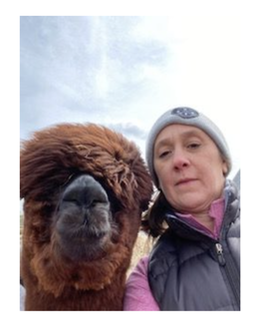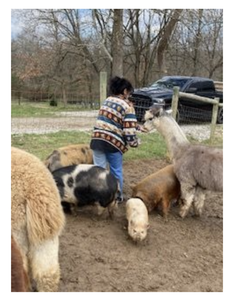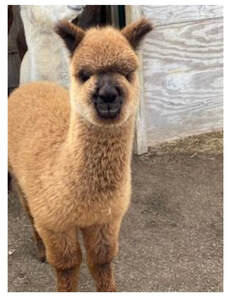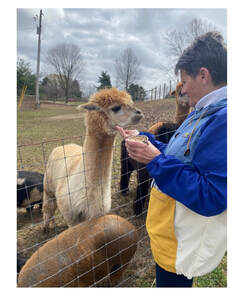 Molly Bochenek, MSW, LISW-S, CTRP-C, School Social Worker, The Learning Spectrum Molly Bochenek, MSW, LISW-S, CTRP-C, School Social Worker, The Learning Spectrum Since my last post, I have completed 2 classes and am working on my third towards my certification. The first class, The Human Animal Bond, was about just as it sounds. The relationship between humans and animals. The difference in how we see animals is based on the purpose that animals have in our lives (work, companion, livestock), our view of animals, and our culture/experience with animals in our lives. Definitions from Pet Partners: Animal-Assisted Intervention (AAI)Animal-assisted interventions are goal-oriented and structured interventions that intentionally incorporate animals in health, education, and human service for the purpose of therapeutic gains and improved health and wellness. Animal-Assisted Therapy (AAT)Animal-assisted therapy is a goal-oriented, planned, structured, and documented therapeutic intervention directed by health and human service providers as part of their profession. This is a broad definition and under this falls Animal Assisted Psychotherapy, Animal Assisted Speech or OT. The person leading the session first has to be qualified in that field (degree, licensed) and then have the training for animal assisted therapy. Animal-Assisted Education (AAE)Animal-assisted education is a goal-oriented, planned, and structured intervention directed by a general education or special education professional. The focus of the activities is on academic goals, prosocial skills, and cognitive functioning with student progress being both measured and documented. Animal-Assisted Activities (AAA)Animal-assisted activities provide opportunities for motivational, educational, and/or recreational benefits to enhance quality of life. While more informal in nature, these activities are delivered by a specially trained professional, paraprofessional, and/or volunteer, in partnership with an animal that meets specific criteria for suitability.  Our our wonderful MSW Intern hanging out with an alpaca and pigs! Our our wonderful MSW Intern hanging out with an alpaca and pigs! The second class, Legal and Ethical Issues in Animal Assisted Psychotherapy, was focused on how to manage your practice while taking care of the animals and your clients. We discussed the terminology and definitions of different types of work with animals. A big portion of our time was spent on adjusting thinking and wording from something like ‘I use animals in my therapy practice’ to “I have animals assisting me in my therapy practice’. Taking breaks is something as therapists we know we need to do between clients. It also stressed the importance of your animal therapy partner having the appropriate space and time to take breaks, allowing them to have a space if they choose not to participate on a certain day. We talked about insurance and consent forms. The class I am currently taking is Animal Behavior and Training. Our first assignment was to look at the evolution of the animal you are going to work with the most in therapy. For us this is the alpaca. From my experience living in Peru, I know the background of alpacas. How they navigate their natural environment. Their original purpose was as a pack animal used to carry people and goods across the rocky mountainous terrain, food, fiber, religious sacrifice and then eventually pets and agritourism in Peru. I have been fortunate enough in the past week to visit 2 farms that have alpacas and do tours. They have many people around touching their animals. I watched some videos of people training their alpacas with a clicker and of alpacas visiting nursing homes. On the farm visits, I learned that alpacas each have their own signals that they are stressed. Just like humans. Some alpacas might hum or flare their nostrils or their bottom lip droops when they are stressed. It will take some time for us to learn the signs our alpacas. My next step in my training is to go do my in person training at Animal Assisted Therapy Programs of Colorado. This is an intense 3 day 8 hours a day training for professionals (clinicians, occupational therapists, psychologists, counselors, speech therapists, etc). Our alpacas are getting closer to coming home. We are all so very excited. My next entry will hopefully be filled with information about my work getting to know our alpacas and what I learned at my in person training.
1 Comment
|
BlogArchives
March 2024
Categories |



 RSS Feed
RSS Feed